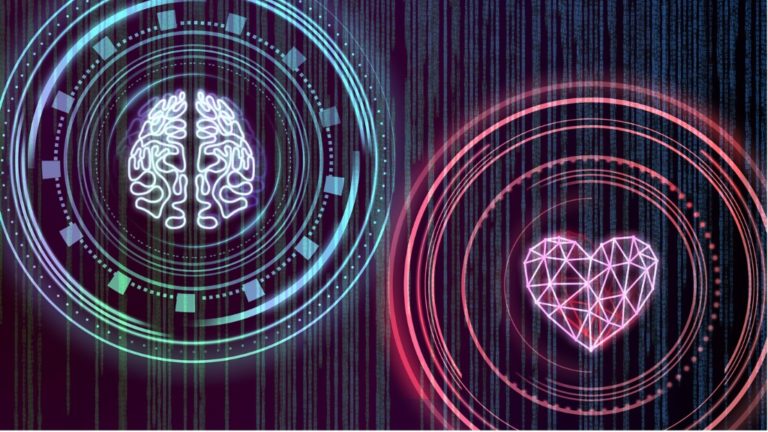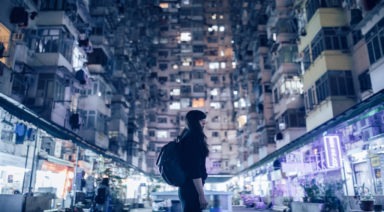Does Your Heart Have a Mind of Its Own?

Until recently, modern science perceived the heart as merely a pump to regulate the flow of blood throughout our bodies. But across numerous cultures, the heart has historically been thought to have a much greater function that corresponds with our thoughts, emotions, and spirit.
When we speak or share feelings from a place of deep meaning or passion, we say we’re speaking from the heart or we’re trying to convey something that is heartfelt. This is no longer just an archaic maxim, but instead, one with factual backing. And science is now realizing that the heart and brain have more of a corollary, interactive relationship than previously thought … a relationship that has residual consequences on our bodies, and possibly even humanity as a whole.
Connecting Two Major Organs
The brain has typically been thought to be the control center for the body, sending directions through the nervous system to different organs, telling them how to behave. This is done through voluntary or involuntary action, like telling the heart to pump blood. But in reality, the heart sends more signals to the brain than the brain does to the heart, influencing emotions, memories, problem-solving, and high-level cognitive functions.
In fact, the heart has its own network of neurons. This network is so sensitive that our heart rhythms become highly ordered when we experience positive emotions, love, and joy. On the contrary, negative emotions and psychological activity cause erratic and jerky heart function, leading to inefficiency, lack of energy, and poor reasoning.
While massive fluctuations can shake up our energy and emotional levels, our heart rates already fluctuate very regularly, sometimes even every beat. Although these fluctuations are minute it shows just how sensitive our hearts are and how susceptible they are to change. These oscillations in our heart rate are called Heart Rate Variability or HRV. HRV essentially measures the change in our heart rate with each beat. It is an effective way of being able to maintain and effect psychophysiological coherence or heart-brain coherence.
How To Maintain Heart-Brain Coherence
The goal of developing and maintaining heart-brain coherence is to essentially tune these organs to the proper frequency, creating a harmony that allows for optimal functioning. The ideal frequency that one wants to achieve is 0.1 Hz. At this frequency, it is scientifically proven that the body activates enzymes that work to delay aging, improve cognitive function, boost our immune system, and promote the production of DHEA, the precursor to all hormones. So how does one achieve a 0.1 Hz frequency?

Eating healthy, organic food should be the first step one should take in the process, but it is not necessarily enough. With soil quality often lacking to provide optimal nutrients, supplements can help give the boost needed to implement one’s diet and attain coherence. Vitamin C from ascorbic acid, Vitamin K, Magnesium, and Calcium are often nutrients that we don’t get enough of, as well as the enzyme CoQ10 which is an antioxidant that promotes cardiovascular health.
Paired with this healthy diet, the primary method for activating heart-brain coherence is through a 10-second breathing technique. Using a breathing rate of five seconds in and five seconds out, while consciously evoking positive thought and emotion, one can activate heart-brain coherence.
Resilience
One of the benefits of practicing heart-brain coherence is that it can lead to greater resilience in one’s heart waves. Although it may sound counterintuitive, the more heart rate variability there is between each beat, or the higher HRV, the more our bodies are capable of adapting to changes.
When we are young we are born with great variability in our heartbeats and therefore greater resilience to deal with the stresses involved with learning. As we grow older, there is less variability, making it more difficult to deal with changes in life. As we age, or when we look at the behavior of older people, sometimes there is a tendency to be stubborn or rigid in our ways, whereas younger people tend to be more flexible and willing to cope with changes in life — this correlates with HRV.
Another extraordinary consequence of the resonance that is created through the frequencies of our body, especially when heart-brain coherence is achieved, is the effect it can have on others. It has been measured that the frequencies generated by our body are emitted and can be picked up within a five-foot radius.
What’s even more astounding is that the frequency generated from our collective consciousness has the power to affect Earth’s magnetic waves. Gregg Braden describes this by showing massive spikes in magnetic fields during times of significant global events. Historically, these massive human-induced fluctuations have occurred from global tragedies, but what could happen if we were able to consciously, collectively harness that power from positive events? The results could be extraordinary.
Mysteries of the Human Heart

“The human heart has hidden treasures, in secret kept, in silence sealed.” — Charlotte Brontë
The human heart, the size of two adult fists, is mysterious, intelligent, powerful, and sometimes inexplicable. The Egyptians believed that Anubis, the god of the underworld and judge of the dead, weighed the hearts of the recently deceased against a feather — if the two balanced, the heart would be returned to owner. If the heart was heavier, it was weighted by bad deeds and fed to a monster.
Heart as Ruler of the Brain
Aristotle considered the heart as the center of reason, thought, and emotion, senior to the brain in importance. Ninth century Arabic philosopher Abu Nasr al-Farabi believed that, “The ruling organ in the human body is the heart; the brain is a secondary ruling organ subordinated to the heart.” Auguste Comte, a 19th century French philosopher declared that the brain should be servant to the heart.
“The most common denominator in all religions is that the heart is the seat of wisdom,” said Rollin McCraty Ph.d, director of research at the groundbreaking HeartMath Institute in Santa Cruz, CA. Twelfth century Christian mystic, Hildegard of Bingen, would agree. She wrote, “The soul sits at the center of the heart, as though in a house.”




































